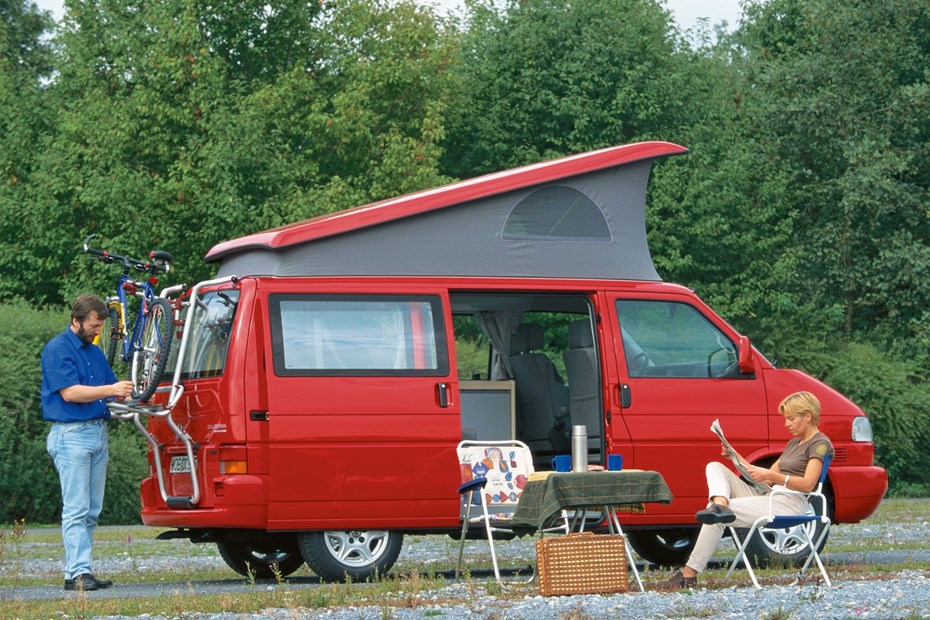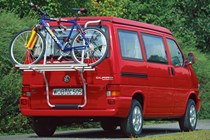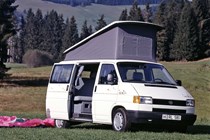Volkswagen vans have always been hugely popular as the basis for a campervan, ever since the original T1 was launched back in the 1950s. And it’s not hard to see why. They’re spacious, flexible, and built in the millions. The third-generation Volkswagen T4 campervan is all those things and it’s the most affordable route into VW camper ownership right now.
There are a vast number of T4 campers on the market to choose from. There’s everything from DIY conversions built on a driveway to professional, Volkswagen-approved campers by the likes of Autosleeper and Westfalia. And you can, of course, buy one that’s still in its original form to convert yourself. And that’s before you get into the enormous range of bodywork, interior, suspension and engine modifications available off-the-shelf.
The Volkswagen T4 makes a great campervan conversion but there are plenty of things to be aware of and watch out for if you’re thinking about buying one. In this guide, we’re going to explain everything you need to know.

What is the Volkswagen T4?
The Volkswagen T4 was only the third generation of VW van (or fourth, depending on how you count them) and the first to have a front-mounted, water-cooled engine. It was built from 1990 to 2004 and proved massively successful. In the UK, the van and minibus versions were sold as the VW Transporter, while the plush MPV was badged VW Caravelle.
A vast range of petrol and diesel engines were available. Most have a manual gearbox but automatics are out there. Likewise, most have front-wheel-drive, but Synchro four-wheel-drive was available and T4s with it are very desirable.
The 2.5-litre, five-cylinder TDI turbodiesel engines offer the best performance in standard form – the 103hp version is fairly easy to find. A 150hp version of that engine was available in the Caravelle – identified by a red ‘I’ in the TDI badge. The Caravelle was also available with a 2.8-litre VR6 petrol engine, which drinks fuel. These are the only versions of the T4 that give anything approaching brisk performance.
The 2.5 TDI and 1.9-litre four-cylinder TD turbodiesel respond pretty well to tuning and many have been pepped up. Otherwise, apart from the exceptions mentioned, the engines produce quite a lot less than 100hp, so you’re not going to get anywhere in a hurry.
A lot of bodystyles were available: short and long wheelbase, low and high roof, panel van and combi, minibus and chassis with single or double cab. A lot of T4s were converted into campervans and coachbuilt motorhomes when they were new, and many more were converted by their owners. Volkswagen itself sold an official campervan badged California, that was built by Westfalia. It’s quite rare and extremely desirable.
A significant facelift was applied in 1996, including a new front grille and headlights. VR6 models got a slightly longer nose to accommodate the engine; it was fitted some other models as well. The T4 was replaced by the T5 Transporter and Caravelle in 2004.
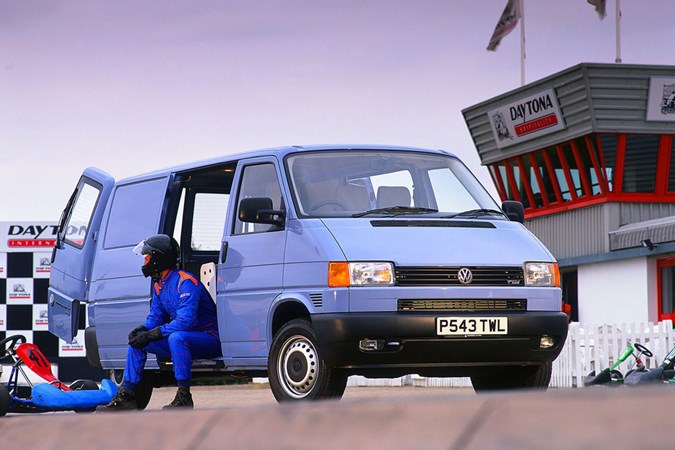
Is the Volkswagen T4 any good?
The T4 Transporter was a quantum leap on from its predecessor. The old T3 Transporter looked antiquated when it was launched in 1979, having a rear-mounted, air-cooled engine and the front axle under the front seat. It was still massively popular, but in no way was it a good vehicle to drive. Its small size meant it wasn’t even a particularly good van.
The T4 was better in every way than the T3 – and it was better than its main rivals, all of which were pretty ancient by 1990. It felt much like a car from behind the steering wheel, giving a smooth and (relatively) quiet driving experience with neat cornering. The cab matched the quality of VW’s cars, as well. The only real demerit was decidedly leisurely performance from all the engines, but that was true of every other van at the time.
As a campervan, the T4 has always worked really well. The range of different bodies provide varying degrees of space from quite tight to huge, and allow real creativity in the layout. There’s an awful lot of enthusiasts and specialists out there, as well, so it’s easy to find someone who can offer advice and look after a T4.
Though it’s a good vehicle in many ways and there are lots of people who love it, the T4 is arguably the least desirable of the VW vans. It’s hard to put a finger on exactly why. In the 1990s, VW vehicles generally lacked charisma and looked rather plain, so maybe that’s it. Whatever the reasons are, it’s great news if you’re in the market for a T4 because that relative lack of desirability keeps prices down compared to its predecessors and successors.
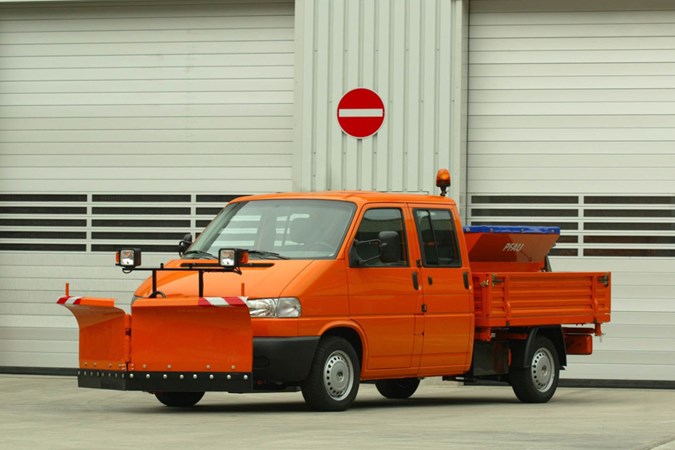
What should I look out for when buying a Volkswagen T4 campervan?
The youngest Volkswagen T4 is 20 years old, the oldest are over 30. As with any vehicle that age, especially a commercial, the main enemy is rust. It can be lurking anywhere and everywhere. Here’s a non-exhaustive list of places to check:
- The edges of the doors and around the openings.
- Around and inside the wheelarches.
- Under the bonnet.
- Around the side door runners.
- Around the windscreen.
- Under the floor coverings.
- Along the side sills.
- As far underneath the vehicle as you can get.
There are some very rusty old knackers out there, and plenty with a patchwork of rust repairs. But there are just as many T4s that have been well looked after and regularly rustproofed. Many have been repainted or have a vinyl wrap. Inspect the paint/wrap closely to make sure it was done to a high standard. Make sure any aftermarket bumpers, side skirts and spoilers are fitted properly and aren’t hiding rust.
If you’re buying a T4 with a high roof body or a lift-up pop-top, check the seals for breaks outside and signs of water leaks inside. Make sure electrical and water connections fit tightly against the body, as well.
What should I look out for mechanically?
Most of the engines fitted to the Volkswagen T4 are fundamentally bulletproof. The only real weak spot to watch out for is the 1.9 TD engine’s fuel pump. All post-1996 models are considered to be better made.
T4s can, of course, suffer through lack of maintenance, which many have experienced. But one that’s still on the road is likely to have been well looked after with regular servicing – and have the paperwork to back it up. That should offset any concerns about what’s likely to be very high mileage on any T4 that was originally a van.
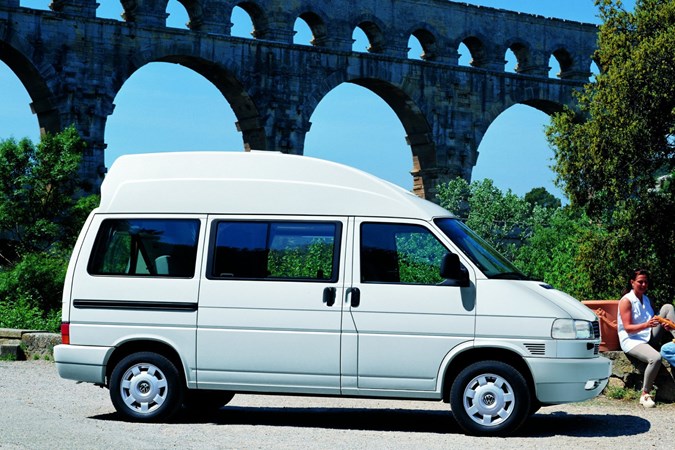
If you’re thinking about buying a T4 that’s more of an unknown quantity, budget for changing all of the engine’s consumables including:
- Fluids and filters
- Belts and pulleys
- Spark/glow plugs
- Water pump
- Possibly the alternator and fuel pump
Don’t neglect the gearbox, either. The synchromesh on manuals can wear out over time, but any crunchiness when changing gear may just mean fresh oil is needed. Automatics need regular transmission fluid and filter changes; four-wheel-drive systems need differential oil changes, as well.
Many turbodiesel T4s have tuned engines. Ask to see any documentation that shows what work was done and how much extra power there is. Things like the air filter, cooling system, exhaust and fuel system often need upgrading to cope with extra power. It’s a red flag if none of that has been done.
The issue you’re most likely to encounter in a T4 engine is overheating caused by a lack of coolant. That can cause head gasket failure, or even a warped cylinder head. The VR6 petrol engine is quite highly strung and demands a rigorous servicing schedule is diligently adhered to. We advise only getting one if you’re willing to take on that responsibility.
What should I be aware of inside the Volkswagen T4?
If you’re buying a basic commercial T4 to convert into a campervan, there’s actually not that much in the cab to go wrong. But make sure what electrics there are work properly – including the heater and any aftermarket stereos and speakers. While you’re there, check all the lights and power steering (if fitted) function, as well.
The most likely issue you’ll encounter is broken dashboard trim and generally tattiness. That can be difficult to sort out as spare parts for the interior are becoming hard to find. Knackered seats can be replaced like-for-like, or there are a plethora of aftermarket options.
Don’t forget to check the condition of the load bay, as well. You may be covering it up, but you might want to repair rust or dents first.
The same general principle applies when looking at a T4 that’s already been converted into a campervan. Make sure:
- The electrics work
- Switches and sockets are securely fastened
- Water and gas connections work
- Windows and air vents are properly sealed.
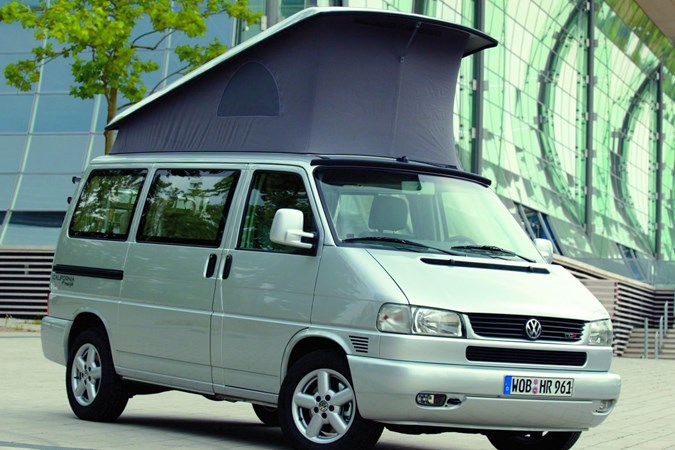
Professional conversions are generally done to a high standard, amateur ones can be bodged together. It’s easy to get caught out – the interior can look lavishly finished, but the quality might not be there. Here are some markers that the conversion was done properly:
- The joinery feels solid
- The drawers open smoothly
- The cupboard doors close tightly
- There are no sharp or rough edges
- All the screws are flush
- Surface finishes aren’t lifting
- The front seats were reupholstered, not just covered
Don’t worry if the décor isn’t to your taste, you can always change it. The layout is harder to alter, though, so make sure it works for you. Especially that there’s enough storage. Also check for damp upholstery – a sure sign of water leaks. And pop-tops should open smoothly and lock firmly into place.
What’s the story on maintenance?
There’s a small army of specialist garages and enthusiasts who know literally everything there is to know about the Volkswagen T4, both in the UK and Europe. There are yet more general Volkswagen specialists who will be happy to work on one, as well. The short bonnet means most of the engine is hidden away under the windscreen, but access is generally pretty good. Doing DIY servicing is relatively easy if you’re confident in your ability.
There’s a good supply of mechanical spare parts available at relatively low cost, though some more obscure items are getting hard to find – always the case with a vehicle this age. Specialists have their preferred suppliers, and you easily buy your own parts if you prefer.
There are a wealth of options for upgrading T4 turbodiesel engines, which can help liberate some more power and/or better fuel economy. If you’re buying one that’s already been modified, you need to find what was done and by who. If you’re having a T4 modified, do some research to make sure you use reputable suppliers.
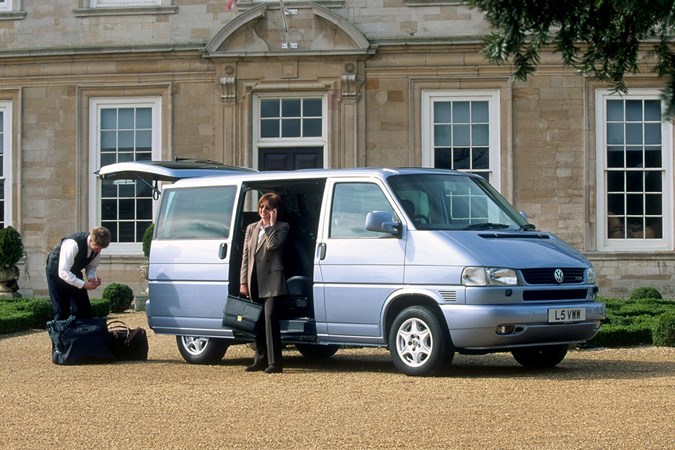
How many miles to the gallon does a Volkswagen T4 do?
Fitted with a turbodiesel engine in fine fettle, a T4 should be able to do around 25-30mpg, maybe more. The (much) less powerful non-turbo diesels and the 2.0-litre petrol engine have to work hard to shift what is quite a large, heavy vehicle, which isn’t a good way to achieve high mpg. However, they should return about 25mpg at a steady 50mph cruise. The VR6 petrol engine might achieve 20mpg if you drive very carefully.
Vehicle excise duty (road tax) and insurance costs are perfectly reasonably, though highly modified T4s can attract a hefty premium.
What else should I know?
It’s worth joining some of the many Volkswagen T4 forums, Facebook groups and clubs to take advantage of the collective knowledge and expertise. You can always get involved in some the activities, as well.
Beyond campervan conversions, there are all sorts of ways you can modify a T4. Everything from an upgraded stereo and plusher seats, to bodykits and LED headlights, to bigger wheels and lowered suspension. Some owners who want more power swap in a different engine. The possibilities are pretty much limitless.
If you want a T4 that’s already been modified, ask to see as much paperwork as possible that shows what was done and who did it. Also physically check the quality of the installation. Be wary of lowered suspension and bigger wheels as they can ruin ride quality.
There are more practical accessories, such as bike racks that attach to the back doors and towbars. Depending on model, the T4 can tow up to 2,000kg – the vehicle identification number plate will show exactly how much. We advise only towing with the more powerful engines, unless you can live with truly glacial acceleration.
Similarly, be careful about how much weight you add when doing a camper conversion. Depending on model, the T4 has a gross vehicle weight of 2,500kg to 2,800kg. You can safely add a few hundred kilos of built-in furniture and appliances, but everything else you put in might tip it over the limit. Again, the VIN plate will show the weights allowed.
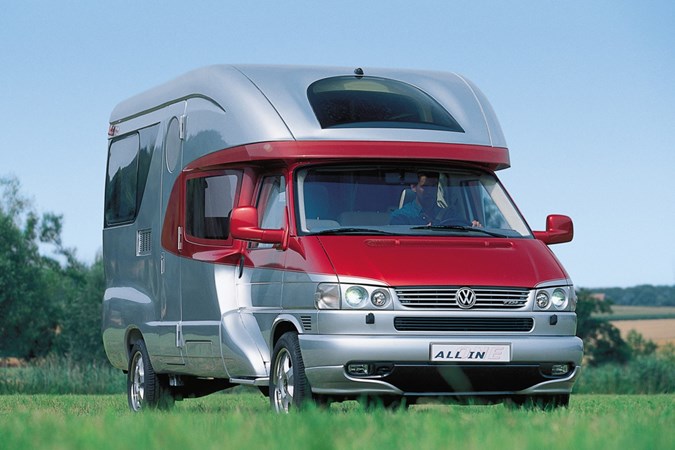
We’ve seen some T4 campervans with separate toilets and showers, based on the long-wheelbase high roof body. But they’re quite rare so, if you want a T4 so equipped, it may be more fruitful to focus on coachbuilt motorhomes rather than campervans.
Pricing
The prices asked for Volkswagen T4s vary widely. You can pick up a basic van that needs some recommissioning prior to conversion into a camper for less than £3,000. Around £5,000 gets a campervan that needs a bit of tidying up. £10,000 to £15,000 buys one that’s perfectly usable as is, more than £15,000 gets a high-quality campervan or a motorhome.
Expect to spend about £20,000 for a Volkswagen California – built by specialist Westfalia, marketed by VW and very rare.. We’ve also seen some lavishly finished conversions priced in the £20,000 to £25,000 range. There are some T4 campervans and motorhomes advertised for more than £25,000 and, while they are lovely, that kind of money looks a bit ambitious to us.
Verdict
The Volkswagen T4 may be the unloved VW campervan, but it’s still ideally suited to the job. There are a lot of ready-built T4 campers and motorhomes available for reasonable money and many of them are done to a high standard.
If you want to do your own conversion, the T4 is a great option, as well. There’s a lot of knowledge and expertise to draw on from people who’ve done it before, there are even some off-the-shelf kits available.
It’s worth noting the T4 survives in larger numbers than most other vans of the 1990s and early 2000s, so it’s easier to find one in serviceable condition than a contemporary Renault Trafic or Mercedes Vito, or even a Ford Transit. And we can’t forget that its lesser status within the VW van world means the T4 is fantastic value for money.
Just so you know, we may receive a commission or other compensation from the links on this website - read why you should trust us.


